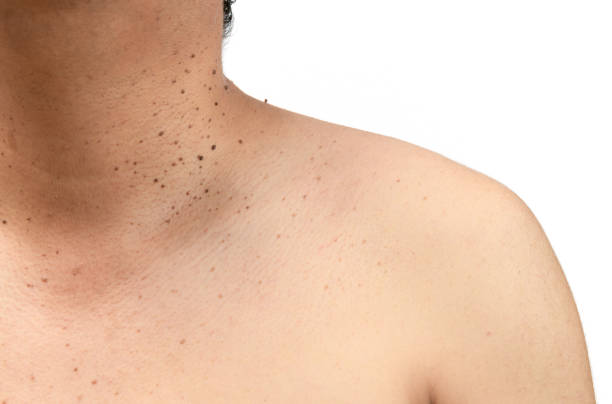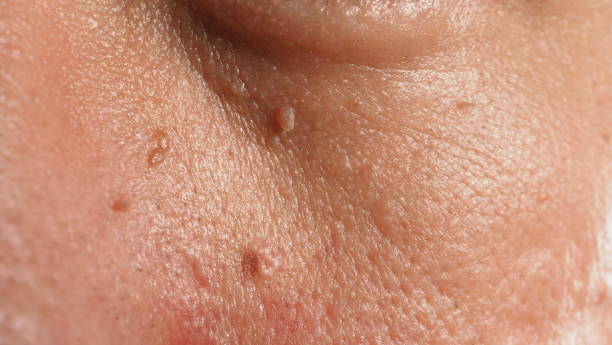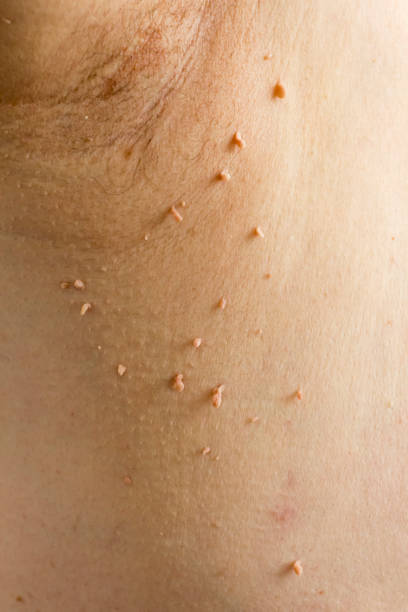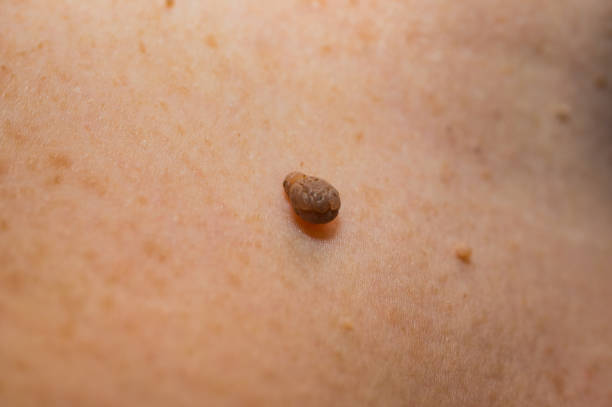
Table of Contents
Skin Tag Removal: Methods, Procedures, and Care
Introduction to Skin Tag Removal
Benign skin growths, known as skin tags, are frequently found in skin folds or areas of friction, and although they are harmless, many individuals choose to remove them for cosmetic or comfort reasons. This article will explore various methods and procedures for skin tag removal, as well as post-removal care and prevention tips.
What are Skin Tags?
Skin tags, medically known as acrochordons, are soft, small, fleshy growths that typically hang off the skin by a thin stalk. Skin tags are generally flesh-coloured or slightly darker in colour, and their size can vary from a few millimetres to a few centimetres. These growths are commonly observed on the neck, armpits, groin, eyelids, and breasts. These growths are commonly found in areas such as the neck, armpits, groin, eyelids, and under the breasts. They are composed of collagen fibres, blood vessels, and fat cells.


Causes and Risk Factors
The exact cause of skin tags has yet to be fully understood, but several factors contribute to their development. It is thought that friction and pressure exerted on the skin, such as when clothing or skin folds rub against the skin, may contribute to the formation of skin tags. Hormonal changes during pregnancy or in individuals with obesity and metabolic syndrome may also contribute to the formation of skin tags. Genetic factors and a family history of skin tags can increase the likelihood of developing them.
Should You Remove Skin Tags?
Skin tags are generally benign and typically do not necessitate removal unless they result in discomfort, irritation, or aesthetic issues. However, it is essential to note that self-diagnosis is not always accurate, and it’s recommended to consult a dermatologist or a qualified healthcare provider for a proper diagnosis and advice on whether removal is necessary.
At-Home Skin Tag Removal Methods
While there are several at-home remedies and treatments for skin tag removal, it’s essential to exercise caution and follow proper techniques to avoid complications.
Over-the-Counter Topical Treatments
Over-the-counter (OTC) topical treatments containing ingredients like salicylic acid or tea tree oil are available for self-treatment of skin tags. These products gradually dry out the skin tag, causing it to fall off over time. However, it’s essential to carefully follow the instructions and seek professional advice for any concerns.
Apple Cider Vinegar
Skin tag removal using apple cider vinegar is a common home remedy. It is believed that the vinegar’s acidity helps break down the skin cells in the tag. To employ this technique, saturate a cotton ball with apple cider vinegar and administer it to the skin tag for a few minutes multiple times a day. Consistency and patience are key, as results may take several weeks to become noticeable.

Dental Floss Tying Method
The technique of dental floss tying entails securely wrapping a piece of dental floss around the foundation of the skin tag to obstruct its blood flow. This method should only be attempted under the guidance of a healthcare professional to ensure proper technique and minimize the risk of infection.
Essential Oils
Tea tree oil, among other essential oils, is believed to possess antimicrobial properties that may assist in the elimination of skin tags. By applying diluted tea tree oil directly to the skin tag using a cotton swab, potential benefits may be achieved. However, conducting a patch test beforehand is crucial, and discontinuing use in case of any adverse reactions is advised.
Medical Skin Tag Removal Procedures
For larger skin tags, or if at-home methods are ineffective, medical procedures performed by a qualified healthcare professional may be necessary.
Cryotherapy
Cryotherapy, or freezing, is a standard medical procedure to remove skin tags. The skin tag is subjected to liquid nitrogen, causing it to freeze and eventually separate from the skin. This Cryotherapy, or freezing, is a standard medical procedure to remove skin tags. The skin tag is subjected to liquid nitrogen, which results in freezing and subsequent detachment. This process is quick and relatively painless, with minimal scarring. However, multiple sessions may be required for complete removal, and there may be some temporary redness or blistering in the treated area.
Electrosurgery
Electrosurgery, or electrocautery, uses a high-frequency electric current to burn off the skin tag. To ensure minimal discomfort, the procedure is conducted using local anesthesia. Electrosurgery is an effective method for removing skin tags, and the healing process is relatively quick. However, it may leave a small scar.
Cauterization
Cauterization involves using a heated instrument or chemical agent to burn off the skin tag. This method is usually performed under local anesthesia to ensure patient comfort. Cauterization effectively removes skin tags, but it may cause some scarring and requires proper wound care during the healing process.
Ligation
Ligation, also known as tying off, is a procedure that involves tying a small thread or surgical suture around the base of the skin tag to cut off its blood supply. Over time, the skin tag will wither and fall off. Ligation is a simple and safe procedure, but the skin tag may take some time to detach completely.
Excision
Excision involves surgically cutting the skin tag using a scalpel or surgical scissors. This method is typically performed under local anesthesia to ensure patient comfort. Excision is effective for removing larger skin tags and provides immediate results. However, stitches may be required, and a small scar may occur after the procedure.


Post-Removal Care and Prevention Tips
After skin tag removal, it is important to follow proper post-treatment care to promote healing and prevent complications.
What to Expect After Skin Tag Removal
After the removal procedure, the treated area may be slightly sore or tender. It is common to observe redness, swelling, or scabbing in the treated area, a normal part of the healing process. Maintaining cleanliness and dryness in the area is crucial, along with adhering to any specific instructions the healthcare professional provides.
Possible Complications and Side Effects
While skin tag removal procedures are generally safe, knowing that there may be potential risks and side effects is essential. These may involve infection, bleeding, scarring, and alterations in skin pigmentation. Therefore, it is crucial to seek medical attention promptly if you notice any signs of infection or have concerns regarding the healing process.
Prevention Recommendations
While it may not be entirely preventable to avoid the formation of skin tags, implementing specific preventive measures can help minimize the risk. These include maintaining good hygiene, avoiding excessive friction or irritation to the skin, and managing underlying conditions such as obesity or diabetes.
Myths and Misconceptions About Skin Tag Removal
There are several myths and misconceptions surrounding skin tag removal. Hence, it is crucial to distinguish between fact and fiction to make well-informed treatment decisions.
Does Removing Skin Tags Cause Cancer?
Contrary to popular belief, removing skin tags does not cause cancer. On the contrary, skin tags are benign growths and are not associated with skin cancer. Nevertheless, seeking guidance from a healthcare professional to ensure accurate diagnosis and effective management of skin concerns is always advisable.
Are Skin Tags Are Contagious?
Skin tags are non-contagious and do not spread from person to person through contact. They are benign growths that develop due to specific factors and are not caused by infections or viruses.
Do Skin Tags Always Reoccur?
While skin tags can reoccur after removal, this is not always true. The likelihood of reoccurrence may depend on individual factors and proper preventive measures. Following good skin care practices and managing underlying conditions can help minimize the risk of new skin tag formation.
When to Consult a Dermatologist
Large Skin Tags
When dealing with multiple or sizable skin tags concentrated in a particular area, seeking professional guidance from a dermatologist is wise. They can evaluate the situation and suggest the most suitable treatment options tailored to your requirements.
Bleeding or Painful Skin Tags
If you notice skin tags that bleed, become painful, or show signs of infection, you should seek evaluation from a dermatologist. These symptoms may signify an underlying problem that warrants medical attention.
Suspicious or Irregular Skin Tags
Skin tags that appear suspicious or have distinctive characteristics, such as changes in colour, size, or shape, should be examined by a dermatologist. While skin tags are usually harmless, it’s essential to rule out potential skin abnormalities or precancerous lesions.
Skin Tags Around the Eyes or Genitals
A dermatologist should evaluate skin tags in sensitive areas like the eyes or genitals. These areas require special care and expertise during removal to avoid complications and ensure optimal results.
By consulting a dermatologist, you can receive professional advice, accurate diagnosis, and personalized treatment options for your skin tag concerns. Moreover, their expertise and experience allow them to carry out procedures safely and effectively, reducing the likelihood of complications.
Conclusion
In conclusion, skin tag removal can be achieved through various at-home methods or medical procedures, depending on the size, location, and individual preferences. While at-home remedies may work for some individuals, it’s essential to be cautious and seek professional guidance when necessary. Consulting a dermatologist ensures proper diagnosis, appropriate treatment, and comprehensive care.
Remember to prioritize post-removal care and follow the instructions to promote healing and reduce the risk of complications. Suppose you have any concerns about skin tags or are trying to decide the best course of action. Therefore, seeking guidance and personalized care from a dermatologist in such situations is recommended.
Book Your Free Consultation Today Or Call (647) 560-9233
By providing your phone number you agree to receive informational text messages from laserskin.ca. Consent is not a condition of purchase. Message frequency will vary. Msg & data rates may apply. Reply HELP for help or STOP to cancel.
